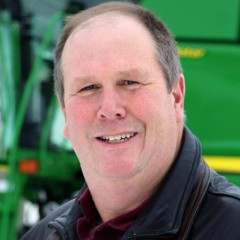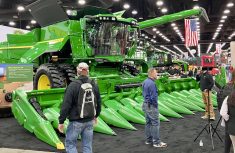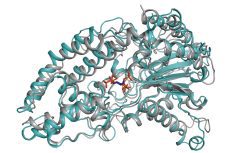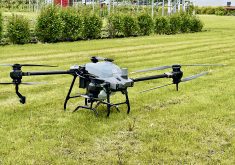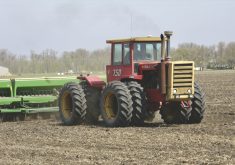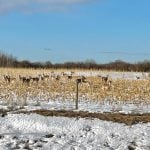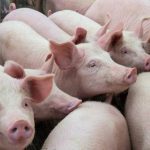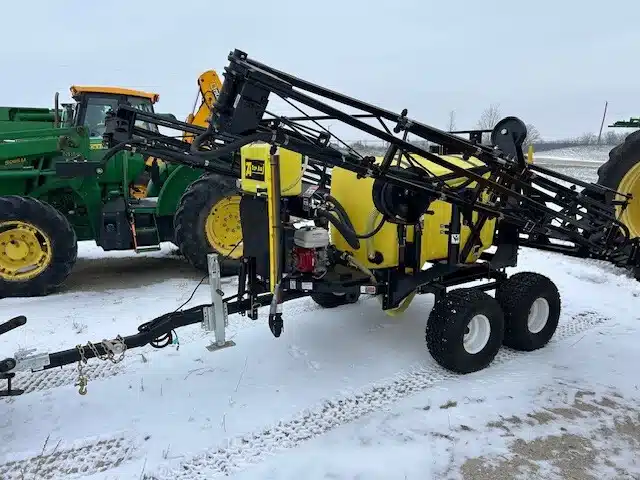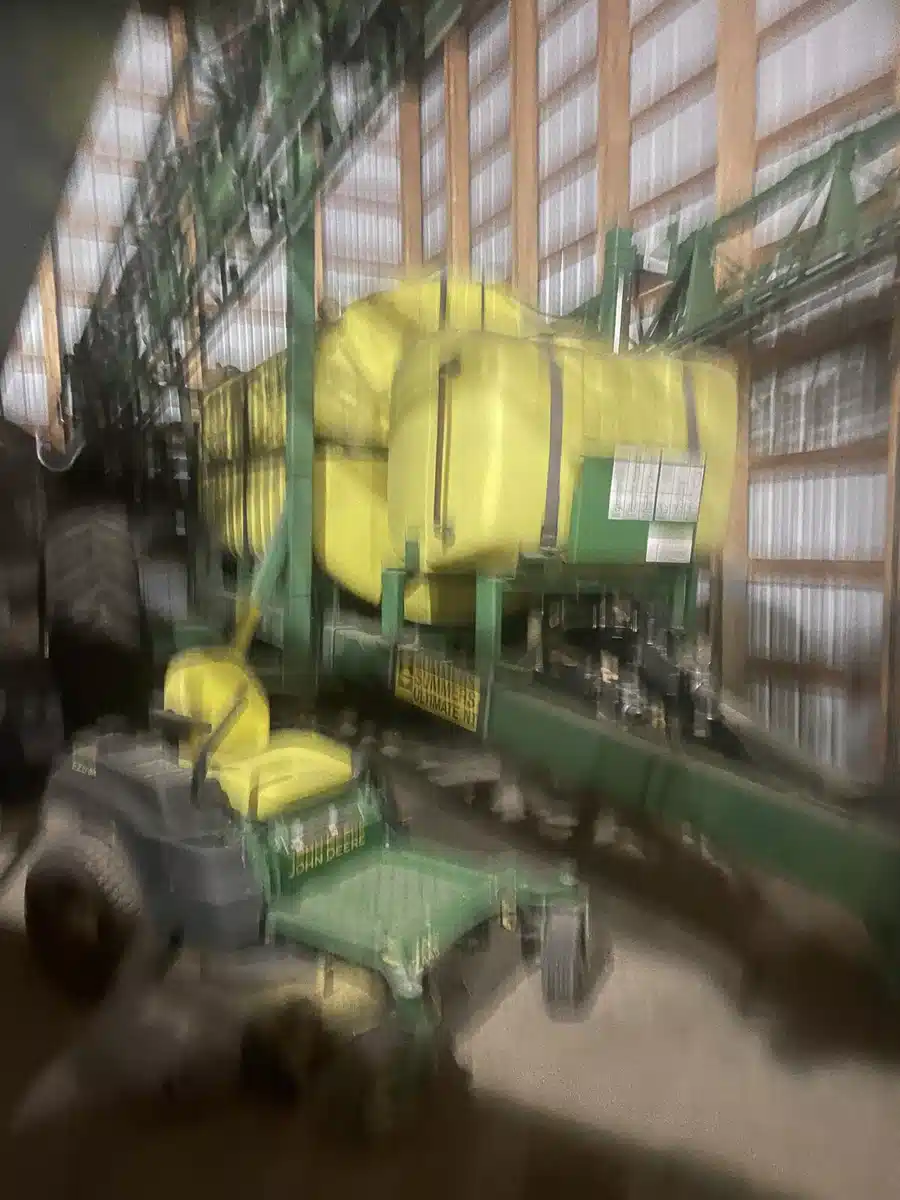The off-label application of pesticides in Canada is going to increase exponentially over the next few years. This is what I believe and expect, and I expect too that it will pit farmers, government regulators, pesticide companies, equipment manufacturers and environmentalists against one another. In fact, the blame game has already started.
At issue is on-farm use of drones for the application of pesticides. Drones with the capability to apply pesticides are now being actively marketed to farmers. Innovative producers are excited. They believe drone application is a great new technology that could add value to their businesses. However, they are frustrated that regulations have not kept up to the technology and that pesticide manufacturers are hesitant to endorse the use of their products via drones. These farmers also worry about resistance from environmentalists and the public.
This issue became clear to me this past fall at the Agri-Trade show in Red Deer, Alberta. I spoke with three of the at least four exhibitors there marketing drones capable of applying pesticides. All made compelling cases why farmers should consider using a drone instead of their current options, i.e. a ground sprayer or hiring a licensed aerial applicator.
Read Also

The big squeeze: How to be fair to siblings during farm succession
Managing sibling business relationships on family farms.
Each also told me they knew of farmers already using drones to apply fungicides and herbicides to cropland and pastures. But what the three vendors did not mention, until I questioned them, was the regulatory restrictions on using their drones for pesticide applications. This is when the conversations really became interesting.
But before I expand on that, this trade show was not the only place where farmer interest in drones is being expressed. Social media has reports of Canadian farmers already using drones. For example, a retailer of agricultural drones recently posted the following on Facebook: “… We also recognize that these won’t replace ground rigs completely yet. However, many of our customers are using these (drones) a couple of ways: smaller fields for fungicide application, ditch lines, headlands on calm days while the high clearance chews up the big acres.”
Then the post went on to add, “That said, we do have customers that opt for these overused pull types for their main sprayer. We have guys that have done 4,500+ acres in the past year with just one. With the bonus being they don’t leave tracks. But most importantly, they’re around $40,000, compared to $1,000,000 for a new high-clearance sprayer.”
On X (formally Twitter) there have also been posts by farmers about using drones for pesticide application. One poster recently wrote: “How far away until we start seeing high-clearance sprayers switched out for drones on farms in Western Canada,” to which one farmer replied: “I think it’s viable now. Just waiting for the rules to catch up,” and another: “We are being held back by gov’t regs more than tech… I expect to see them flying in my area in the next two to five years.”
Which brings me back to the real issue. Drones for use in the application of pesticides are being actively marketed to farmers eager to purchase and adopt this technology despite the fact there are only three pesticides currently registered for application by drones. All three are biological insecticides for mosquito control and are likely not the products being used by farmers who are already using drones.
Many farmers I spoke with thought that any pesticides labelled for aerial application can be used in a drone. Unfortunately, this is false but there is little incentive for salespeople to correct this misconception. In my experience, instead, it’s like there’s a buyer beware, “don’t tell if they don’t ask” sales tactic in use by drone vendors.
Worse yet, every player in this confusing situation seems to be pointing the finger at someone else for the label delays. It is a real catch-22.
So, who actually is responsible for reviewing, updating, harmonizing, and/or making regulatory changes that will enable farmers to operate drones? Here is what some invested parties have to say:
Farmers
First and foremost, a growing number of farmers are interested in using drones for pesticide application. Some already own drones and use them for field mapping, field scouting and personal fun. It’s natural to seek other applications for this technology on the farm.
Other farmers are intrigued by lower application costs. When a new drone equipped for pesticide application is four per cent of the price of a new high-clearance sprayer, farmers get interested fast.
For smaller-acreage farmers who cannot see ever being able to justify the cost of a high-clearance sprayer, a single drone might fulfill their needs.
Other attractions include eliminating wheel tracks and compaction and being able to navigate in the corners and small areas a lot more easily.
And then there’s maintenance. There’s a whole lot more that can go wrong on a million-dollar sprayer than on a drone. And, likely, the farmer can repair or replace faulty parts on a drone while the ground rig sits idle with a large tank full of product while the farmer waits for an expensive service call.
Some farmers aren’t prepared to wait for those changes and are using drones already.
Drone vendors
Drone vendors blame both government and industry for holding up official approvals for drone spraying and they seem to have no qualms about promoting the spray capability of their drones in order to build up farm pressure.
Even getting a fraction of farmers to buy spray-equipped drones would mean big new sales.
Drone suppliers focus on the much lower capital cost and the ability of a single drone to spray 25 to 40 acres an hour but there are other advantages as well. Less water is needed, the turnaround time for filling is quick, and there’s a safety benefit in having a maximum of 30 or 40 litres of product on board compared to a high clearance load of 800 to 1,600 gallons.
Besides, by changing the tank a drone can go from applying liquid pesticides to dry fertility products in minutes.
PMRA
Getting government regulatory approval for drone pesticide application is complex. All levels of government and a number of regulatory agencies evaluate, license, monitor, and ultimately enforce the Pest Control Act and its regulations.
Before any pesticide can be applied in Canada it must be approved by the Pest Management Regulatory Agency (PMRA), a division of Health Canada. According to a PMRA spokesperson “Health Canada’s primary objective in regulating pesticides is to help protect the health of Canadians and the environment. All pesticides must undergo a rigorous science-based review before being approved for sale in Canada. Depending on the type of active ingredient and the data on file, pesticides may require drone-specific data; there are several value, health (both occupational and dietary exposure), and environmental data requirements that need to be met before drones can be added to the respective product labels.”
“Pesticide application by drone is only permitted if stated on the registered pest control product label. The registered product will state ‘Remotely Piloted Aircraft Systems‘ and/or ‘RPAS’ on its label if permitted.”
At this time there are only three pesticides in Canada that are labeled as such and can be legally applied by a drone. They are the mosquito larvicide products mentioned above, which received federal approval for drone application in 2022 but are still held back by provincial restrictions.
These are all restricted class microbial products for use in mosquito control, not the pesticides farmers are likely to be applying.
The biggest roadblock is not the technology, but the lack of pesticides labeled for RPAS application. And because of the testing protocol required for this label amendment, changes to labels will not happen overnight, or even in the next year for most pesticides.
Data needs to be generated, packaged and sent to PMRA, after which PMRA typically needs one to two years to review – and sometimes more.
And until then, there are penalties for spraying products by drone that aren’t labeled for that use.
When I asked PMRA, I was told it would be a violation of the Pest Control Products Act. “Depending on the specific non-compliance situation,” the spokesperson said, “Health Canada has at its disposal a suite of enforcement tools.” Those include product seizures, fines and more.
PMRA is aware of farmer interest in drones and is already working with a number of national and international organizations studying pesticide applications with drones including OECD Drone/UASS Subgroup, the North American Remotely Piloted Aerial Application Systems (RPAAS) Working Group, the Unmanned Aerial Pesticide Application Systems Task Force (UAPASTF) spray drift trials, and the Agriculture and AgriFood Canada (AAFC) crop residue trials working group.
PMRA also points out they have a program to issue research authorizations, which could include research with drones for specific pest control products.
PMRA stresses too that they are not involved in regulating the marketing or sales of drones and that it is up to pesticide manufacturers to initiate pesticide label amendments for drone application.
Pesticide manufacturers
CropLife Canada represents Canadian manufacturers, developers and distributors of pest control products. Its president and CEO Pierre Petelle says: “Our members are actively working with PMRA on the use of drones for applying pesticides. There is definitely a place for this technology.”
Petelle says CropLife is working with PMRA to determine what data is needed to be collected to evaluate drone application of pesticides, but until anyone knows how much drone testing (such as spray pattern, drift and droplet size) will be needed, it isn’t possible to even put an estimate on when the first pesticides may be labelled for drone application.
Nor could he provide a cost estimate, although he says a rough ballpark estimate would about $1 million to get a ground-sprayer product approved for aerial application, and it would require data from a couple of growing seasons.
Petelle adds though that the U.S. is also working toward utilizing drones for pesticide application and CropLife Canada is working with regulatory agencies there to try to share knowledge and harmonize regulations.
Petelle notes PMRA has a lot on its plate besides drones but feels it needs to prioritize drone evaluation since drones are already in commercial use applying agriculture pesticides in countries including China, Australia and Argentina. He reports watching a video of a swarm of drones, numbering 30 wide, spraying a commercial field crop.
Aerial applicators
Shara Tardif, executive director of the Canadian Association of Aerial Applicators, feels farm show sales promoting drones for pesticide application border on false advertising. Her organization has raised its concerns with companies marketing drones. She feels farmers need to be informed that there are no herbicides or fungicides currently labelled for drone application.
She feels farmers should also be warned if they do apply a pesticide off label, they can face fines of thousands of dollars.
That said, Tardif says: “drones are coming. They are already being used in the U.S. where regulations are different.”
Tardif added her organization is not opposed to farmers using drones provided the user has the relevant pesticide applicator licensing and proper Transport Canada licensing to fly the drone, and also providing they follow the label. In fact, she feels some licensed aerial applicators may even invest in drones to use for spot spraying or in areas where because of field size, powerlines or other obstacles, fixed wing aircraft are not suitable.
Transport Canada
Transport Canada is responsible for all types of aircraft, including drones with specific criteria that would have an impact on a farmer wanting to use a drone to apply pesticides. When asked about using drones for pesticide application, a Transport Canada spokesperson stated: “All drone pilots operating in Canada must follow the rules set out in Part IX of the Canadian Aviation Regulations and are strongly encouraged to consult Transport Canada’s drone safety resources to ensure their operations are safe and legal. Under Part IX, all drones weighing 250 g to 25 kg must be registered and pilots must obtain a certificate for basic or advanced operations.
Pilots who wish to fly their drone outside of the rules of Part IX for a specific purpose must apply for a Special Flight Operations Certificate (SFOC) with permission to operate a drone for specific purposes under special conditions.
A SFOC is also currently required for operating a drone out of the line of sight, for drones weighing over 25 kg, and for drones carrying dangerous or hazardous payloads, which pesticides are likely to be considered. It can take up to a month or more to submit and receive a SFOC, which could have a severe impact on pesticide spray timing.
Additionally, federal, provincial, or territorial rules may apply to the dispersal of pesticides from drones. More details are available by Googling “Information Note Regarding the Use of Drones when Applying Pesticides.”
Fines for breaking Transport Canada RPAS regulations range up to $25,000.
Equipment manufacturers
The companies that manufacture ground and high-clearance sprayers also have an interest in the viability of drones. Adoption of this technology by farmers could have an impact on their business. However, when questioned as to what they feel the impact might be if drones are approved for pesticide application, all the major equipment companies declined to comment for this article.
The public
The greatest unknown in the issue of pesticide application by drones may be how receptive the public will be to drones applying pesticides.
The bottom line
If you are a farmer considering the purchase of a drone for applying pesticides on your fields… Buyer Beware! Even though you can legally purchase a drone capable of applying pesticide, there are no labelled agriculture pesticides a drone can legally apply in Canada, even on your own property.
This is unlikely to change soon. Off-label drone application by farmers will not speed up the licensing process and it may lead to the seizure of the drone and hefty fines. Worse yet, an accident with an illegal, pesticide-carrying drone could set back the approval process.
On the other hand, farmers should be lobbying government and especially the manufacturers of pesticides, in an effort to make the necessary research, testing and evaluation a priority so agricultural pesticide labels can be amended for drone application. Farmers interested in drone pesticide application need to express that interest to government and industry.
– This article was originally published in the January 2024 issue of Country Guide.

